Major and Minor scales are the two most commonly used scales in music today. In Music Theory, there is a formula to instantly figure out the notes in any major or minor scale. It will allow you to create musically correct chords, melodies and harmonies. If you struggle to know which notes to use when composing a track, this guide will provide you with the tools you need to quickly recall the notes in any major or minor scale.
- | Semitones & Tones
- | What Are Major & Minor Scales?
- | The Formula To Major & Minor Scales
- | How To Use These Formulas
- | Major-To-Minor Technique
Without further ado, let’s dive in!

| Semitones & Tones
Before we get started, it’s important to understand what a Semitone and a Tone is. Semitone and Tone intervals represent the distance between two notes in a scale.
Put simply, a Semitone is one step up or down the keyboard from a specific note. For example, if we’re starting at C, a semitone up would be C# (Db) and a semitone down would be Cb (B). Here is an example of a semitone interval:
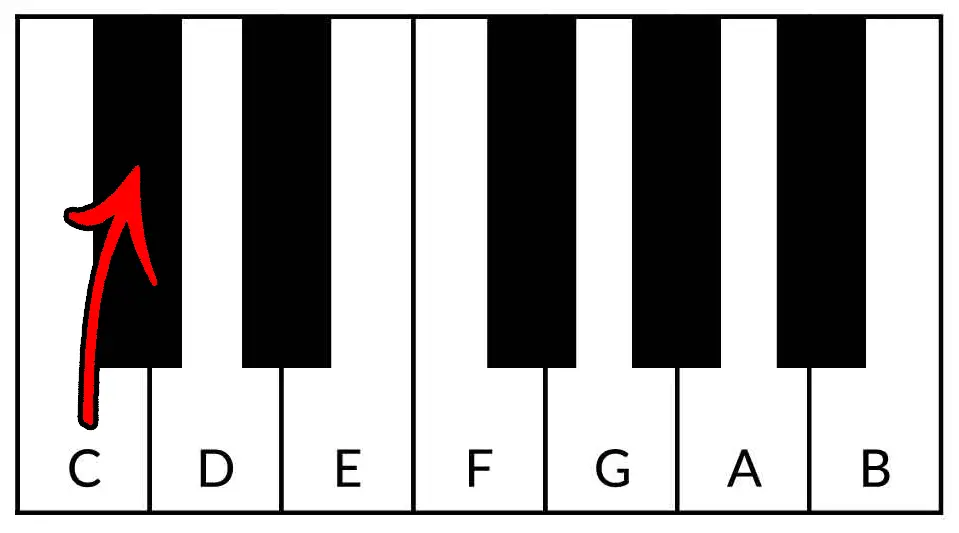
Similarly, a Tone is two steps up or down from a note. If we start at G, an ascending tone would be A and a descending tone would be F. Below is an example of a tone interval:
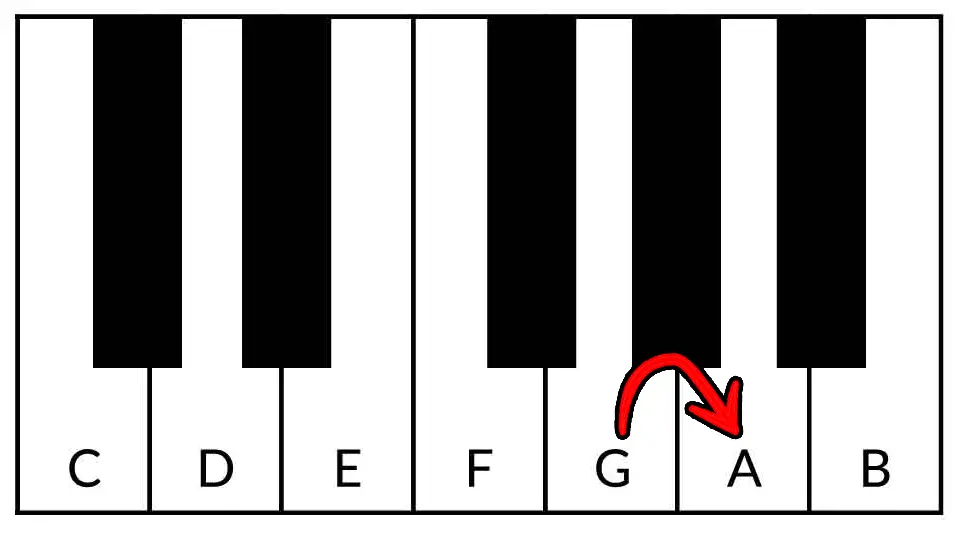
| What Are Major & Minor Scales?
Scales are a set of notes divided across an octave. It is a group of tones from which you can build melodies and harmonies. In the case of major and minor scales, each contain seven notes plus the root note an octave higher which can be considered an eighth note. As a result, the seven unique notes in these scales contain seven intervals between them – five tone intervals and two semitone intervals.
Commonly, the chords and melodies that make up a song are composed of notes found in the song’s scale (also referred to as key). Knowing which scale a song is founded upon will give you all the tools you need to craft additional melodic and harmonic elements.
Major scales and their chords have a brighter, cheerier sound while minor scales and their chords have a darker, sadder sound. This is often a helpful indication when identifying a scale aurally.

| The Formula To Major & Minor Scales
The major and minor scale formulas consist of a pattern of ascending Tone and Semitone intervals that help you determine which note comes next in the scale, starting from the first note called the root note. Keep these formulas on a sticky note on your computer to help you next time you’re creating your next masterpiece.
| Major Scales
Notes in the major scale ascend using the following formula:
T – T – ST – T – T – T – ST
The red dots (•) specify each note in the C Major scale. The red brackets (|—–|) displaying either Tone (T) or Semitone (ST) represent the interval size between each note in the scale.
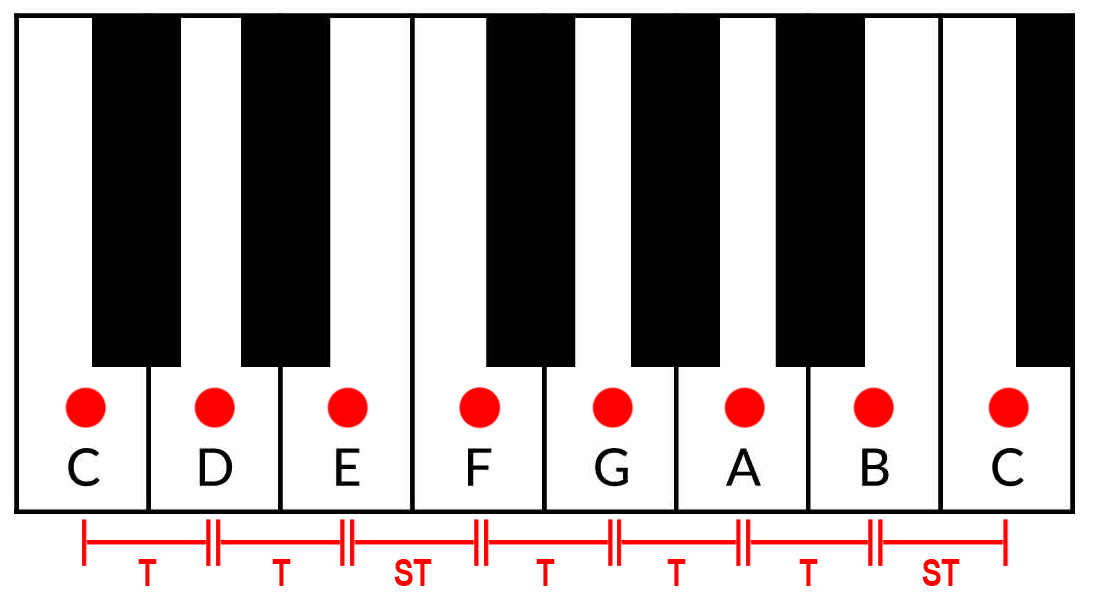
| Minor Scales
Notes in the major scale ascend using the following formula:
T – ST – T – T – ST – T – T
The red dots (•) specify each note in the C Minor scale. The red brackets (|—–|) displaying either Tone (T) or Semitone (ST) represent the interval size between each note in the scale.
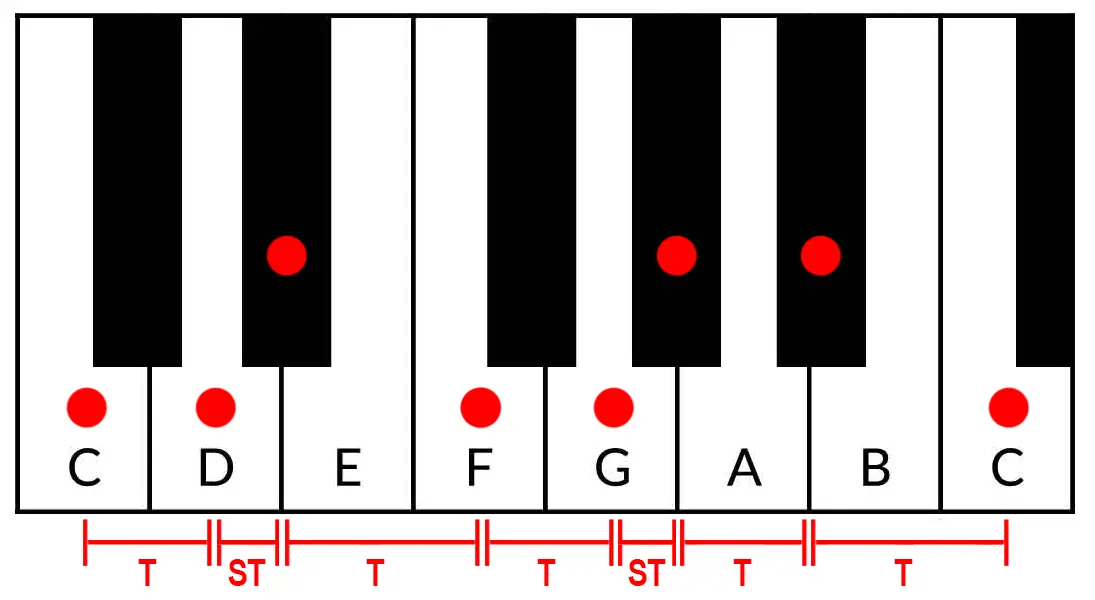
| How To Use These Formulas
Begin with the root note which is the starting note in the scale. In the examples above, the root note is C. Then ascend up the keyboard using the first interval stated in the formula. In both the major and minor scale, the first interval is a Tone (T), meaning the second note in the scale is two steps up the keyboard to a D. You then continue up the keyboard using the remaining intervals stated in the formula.

| Major-To-Minor Technique
If you have already learnt the notes in a particular Major scale but want to quickly turn it into a Minor scale instead, there is a simple way to do it. All you need to do is lower the third, sixth and seventh notes of the major scale down by a semitone.
Take C Major for example. This scale has no sharps or flats.
C – D – E – F – G – A – B
But lower the third, sixth and seventh notes of the scale (E, A, B) and it now becomes C Minor.
C – D – Eb – F – G – Ab – Bb
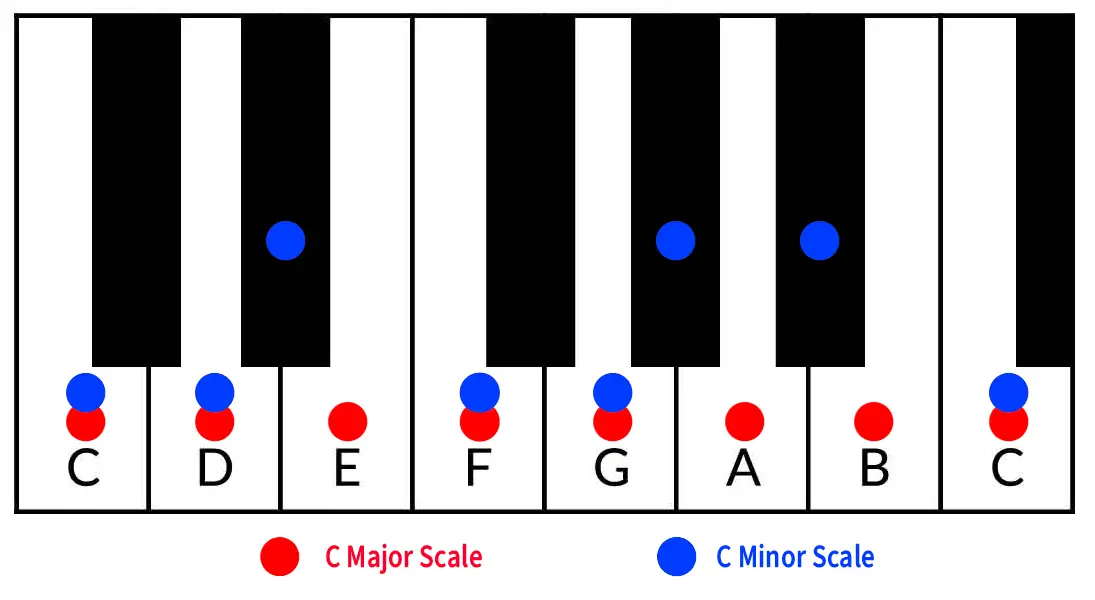
Want To Know More?
Here at Live Aspects, we have dozens of useful lessons and tutorials created to enhance your music production skills and help speed up the learning process. You can access our huge range of music theory lessons and production tips and tricks here.